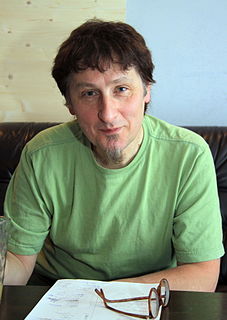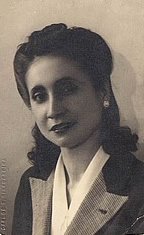Related Research Articles
The music of Ecuador is a diverse aspect of Ecuadorian culture. Ecuadorian music ranges from indigenous styles such as pasillo to Afro-Ecuadorian styles like bomba to modern indie rock.
José María Egas was an Ecuadorian poet. Many of his poems were turned into the lyrics of "pasillos". Egas studied law at the University of Guayaquil graduated in 1927. He was then active as a lawyer and journalist, but became best known for his poetry, being appointed national poet laureate in 1976. He served as a professor at the University of Guayaquil. He was the brother of the poet Hugo Mayo.
Iván Carvajal Aguirre is an Ecuadorian poet, philosopher and writer. In 1984 he received Ecuador's National Prize for Literature, the "Aurelio Espinosa Pólit" prize, for his work entitled "Parajes". In February 2013 he won the Premio a las Libertades Juan Montalvo.

Jorge Carrera Andrade was an Ecuadorian poet, historian, author, and diplomat during the 20th century. He was born in Quito, Ecuador in 1902. He died in 1978. During his life and after his death he has been recognized with Jorge Luis Borges, Vicente Huidobro, Gabriela Mistral, Pablo Neruda, Octavio Paz and Cesar Vallejo as one of the most important Latin American poets of the twentieth century.
Mesías Maiguashca is an Ecuadorian composer and an advocate of Neue Musik, especially electroacoustic music.
Pasillo is a Colombian, Ecuadorian, Venezuelan, and Panamanian genre of music extremely popular in the territories that composed the 19th century Viceroyalty of New Granada: Born in the Colombian Andes during the independence wars, it spread to other areas; especially Ecuador and, to a lesser extent, the mountainous regions of Venezuela and Panama. Venezuelans refer to this style of music as "vals".
Carlos Galo Raúl Bonilla Chávez better known as Carlos Bonilla was one of the pioneers of the Ecuadorian classical guitar and an important figure in 20th-century Ecuadorian music.
Eduardo X Arroyo is an Ecuadorian painter.

Domenico Brescia (1866–1939) was an Italian composer who taught in Chile and Ecuador, then became known in the United States for writing chamber music as well as musical accompaniment for dramatic performances. Brescia led the Music Theory department at Mills College.
Arturo Rodas is an Ecuadorian-born French-citizen composer.
Gerardo Guevara is one of the key composers in Ecuador. His work combines native music with contemporary techniques.
Leonardo Cárdenas Palacios is an Ecuadorian composer, pianist and orchestra director. He studied at the Conservatorio de Música Salvador Bustamante Celi in Loja with many famous musicians, both Ecuadorian and from abroad.
Nelson Estupiñán Bass (1912–2002) was born in Sua, a city in the predominantly Afro-Ecuadorian province of Esmeraldas in Ecuador. He was first homeschooled by his mother before traveling to the capital city of Quito where he graduated from Escuela Superior Juan Montalvo with a degree in public accounting in 1932. Bass identified with the Communist Party during this time and in 1934 had the opportunity to publish two of his poems in the socialist diary La Tierra.

Rodolfo Pérez Pimentel is an Ecuadorian lawyer, historian, and biographer. He was declared the lifetime chronicler of the city of Guayaquil, and is a member of the National Academy of Ecuadorian History. He was the 2005 recipient of the Premio Eugenio Espejo in Literature, awarded to him by President Alfredo Palacio.

Arturo Borja Pérez was an Ecuadorian poet who was part of a group known as the "Generación decapitada". He was the first in the group to excel as a modernist poet. He did not produce a lot of poetry, but the small amount of poetry he produced showed great quality. He published twenty poems in a book titled La flauta de ónix, and six other poems were published posthumously. The group is called "decapitada", or decapitated, because all its members committed suicide at a young age.

Humberto Fierro was an Ecuadorian poet who was part of a group known as the "Generación decapitada". The group is called "decapitada", or decapitated, because all its members committed suicide at a young age.

Raquel Verdesoto Salgado de Romo Dávila was an Ecuadorian writer, poet, teacher, feminist, and activist.

Luis Cadena was an Ecuadorian painter. He worked principally in portraiture but also painted many religious subjects for the Roman Catholic Church. He was appointed director of the Academia de Dibujo y Pintura in Quito in December 1860 and served as director of the Escuela de Bellas Artes of the same city from 1872 to 1875.
Jorge Humberto Araújo Chiriboga (1892-1970) was an Ecuadorian composer and actor, best known for his contributions to the pasillo genre. He was born in Riobamba, Chimborazo to Ángel Felipe Araújo, an army colonel. He studied at the Colegio San Felipe Neri in Riobamba and the Universidad Central de Quito. He worked as a librarian at the Biblioteca Municipal de Riobamba. Like his father, he served in the military and rose to the rank of lieutenant. He took early retirement to dedicate himself to the theatre and music.
References
- Apel, Willi. Harvard Dictionary of Music, Harvard University Press, 1969, p. 253.
- Béhague, Gerard. 2001. "Ecuador. Art Music". The New Grove Dictionary of Music and Musicians , second edition, edited by Stanley Sadie and John Tyrrell. London: Macmillan Publishers; New York: Grove's Dictionaries of Music.
- Bull, Storm Index to biographies of contemporary composers. New York: Scarecrow Press, 1964, p. 405
- Composers of the Americas Biographical data and catalog of their works Volume 4. Washington, D.C.: Secretaria General, organizacion de los Estados Americanos, 1958.
- Chronological catalog of the works of the Ecuadorian composer Luis H. Salgado Boletin interam. mus., no.1 (Sep 1957), p. 45-50
- Diccionario de la música española e hispanoamericana (DMEH). Published by Sociedad General de Autores y Editores (SGAE) and Instituto Nacional de las Artes Escénicas y de la Música (INAEM) from the Spanish Ministerio de Educación, Cultura y Deporte.
- Pérez Pimentel, Rodolfo. In: Diccionario Biográfico del Ecuador, Guayaquil 1987.
- Robijns, Jozef; Zijlstra, Miep. Algemene muziek encyclopedie hoofdred., J. Robijns en Miep Zijlstra. Haarlem: De Haan, [1979]-1984
- Rosner, Helmut; Bulling, Burchard; Frank, Paul; Noetzel, Florian. Kurzgefasstes Tonkunstler Lexikon Fortfuhrt von Burchard Bulling, Florian Noetzel, Helmut Rosner Wilhelmshaven: Heinrichshofen, 1974. Note: Zweiter Teil: Erganzungen und Erweiterungen seit 1937
- Slonimsky, Nicolas. Music of Latin America. New York: Thomas Y. Crowell, 1945, p. 374.
- Walker, John L. "The Younger Generation of Ecuadorian Composers", Latin American Music Review University of Texas- Volumen 22, Número 2, Fall 2001.
- Morris, Mark. The Pimlico Dictionary of Twentieth Century Composers. Pimlico, 1999.
- Stevenson, Robert. "Quito". The New Grove Dictionary of Music and Musicians, second edition.
- Opus, no. 31. Issue dedicated to Luis H. Salgado. Edited by Arturo Rodas. Central Bank of Ecuador . Quito, January 1989.
- Luis H. Salgado in Grandes Compositores Ecuatorianos, edited by Pablo Guerrero G. CONMUSICA. Quito. January 2001.
- Wong Cruz, Ketty. Luis H. Salgado, un Quijote de la música. Central Bank of Ecuador & Casa de la Cultura Ecuatoriana Benjamín Carrión. 2004. ISBN 9978-62-315-9